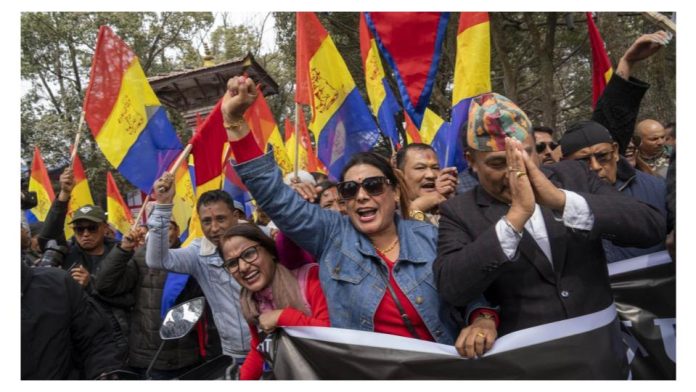In a surprising turn of events, the streets of Kathmandu have become a focal point for a unique demand that challenges the prevailing global trend towards democratic governance. Thousands of Nepalese protesters are fervently advocating for the reinstatement of their monarchy, shaking the very foundations of their republic.
The voices of these demonstrators resonate with sentiments from a bygone era when the king held supreme authority. Vocal supporters of the former Nepali king claims, “Our country will regain its value and identity only if it returns to a monarchy, with the king reinstated to the throne.” Others, like Pasupathi Khadga, see the monarchy as intrinsic to the nation’s identity, stating, “For Nepal and the Nepali people to persist, we need a monarchy. Without a king, we lack an identity as Nepalese, and we might as well declare ourselves refugees.”
Nepal’s history
This fervor for monarchy is particularly intriguing given Nepal’s recent history. Until 2005, the country operated under a constitutional monarchy. However, King Gyanendra’s authoritarian actions, including dissolving the parliament and restricting civil liberties, led to widespread unrest. Public protests in 2006 demanded the king’s abdication, resulting in the transfer of power to the parliament and the subsequent abolition of the monarchy in 2008.
The clamor for a return to monarchical rule stems from the perceived challenges of Nepal’s democratic experiment. Since becoming a republic, the country has witnessed a remarkable turnover of 13 governments— in just 16 years. Political instability has become the norm, with coalitions forming and dissolving rapidly. The recent reshuffling of coalition partners, reminiscent of past political maneuvers, serves as a stark reminder of this volatility.
Economic struggles fuel discontent
Economic indicators further fuel disillusionment with the democratic system. Nepal’s GDP growth has been sluggish, inflation remains high, and youth unemployment is alarming. The departure of young Nepalese in search of opportunities abroad highlights deep-seated frustrations with domestic prospects.
Even though the grievances are valid, it is not advisable to romanticise the past as they led to the failure of Nepal’s political class—not the democratic system itself—are to be blamed for the current situation. The resurgence of royalist factions within the democratic framework will complex the debate even further.
Charting the path forward
As Nepal grapples with this crucial question is clear: addressing the root causes of dissatisfaction within the democratic framework rather than resorting to a regressive solution. The fate of Nepal’s governance ultimately lies not in the hands of a monarch but in the collective will of its people and the ability of its leaders to govern effectively.

